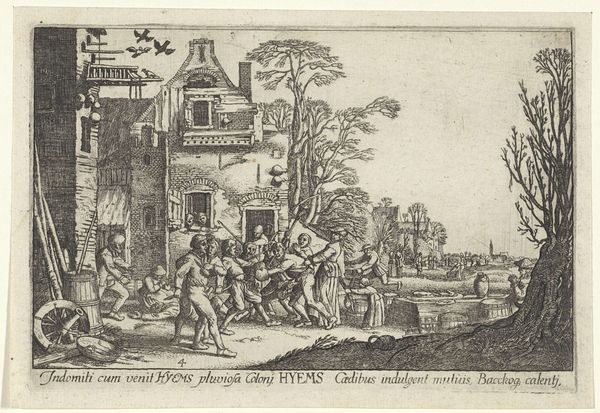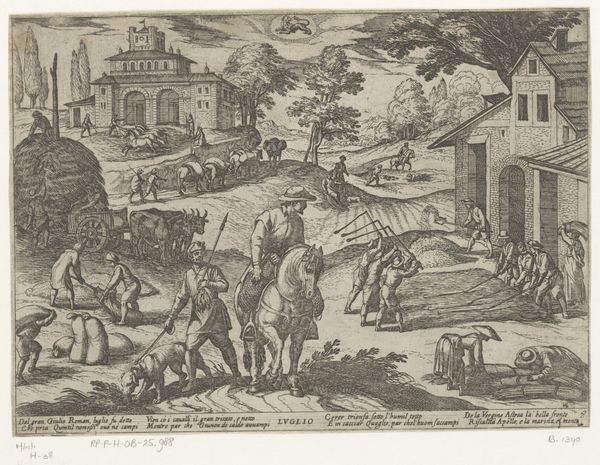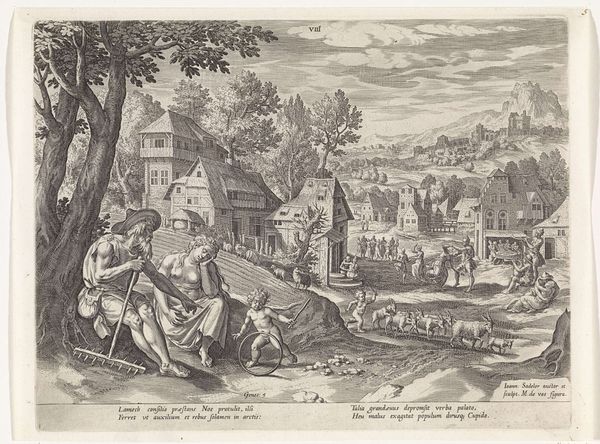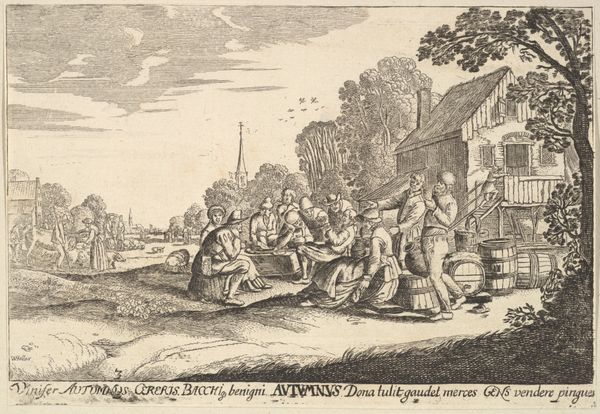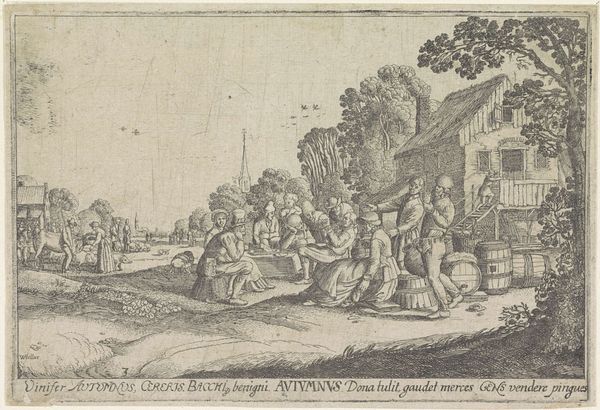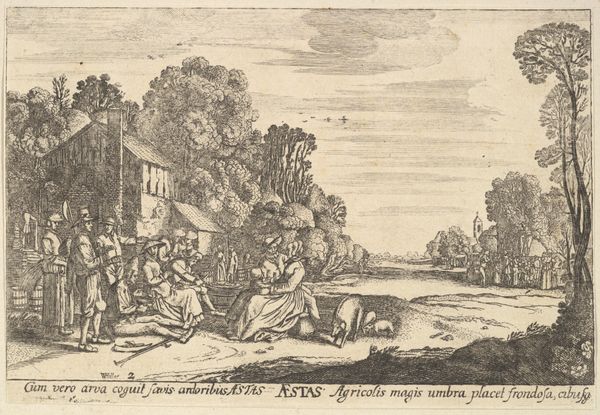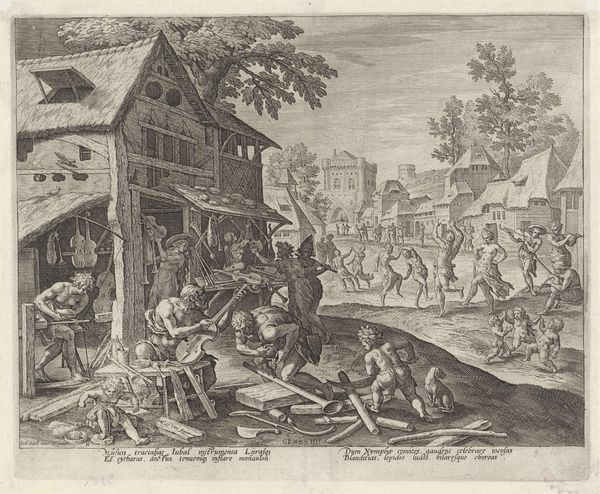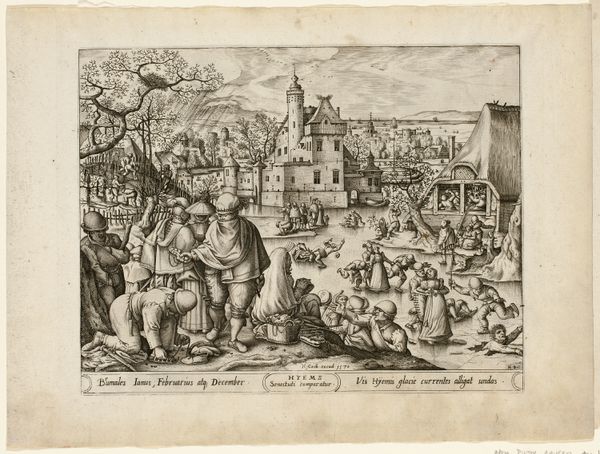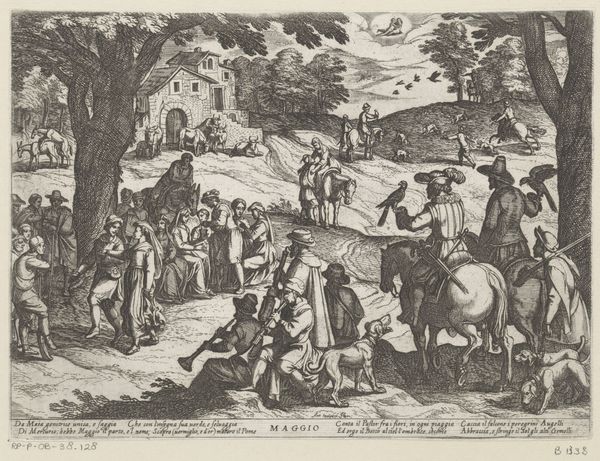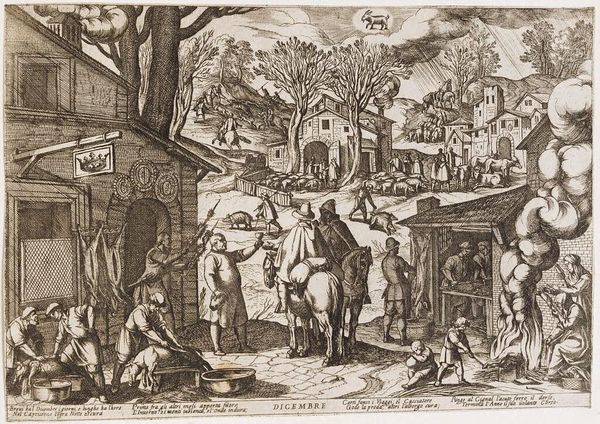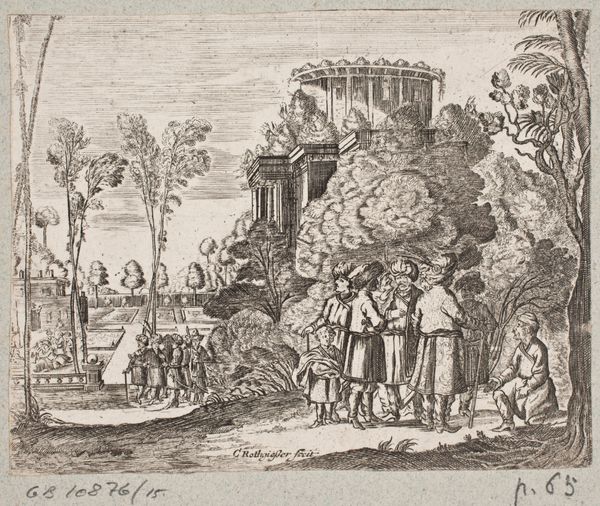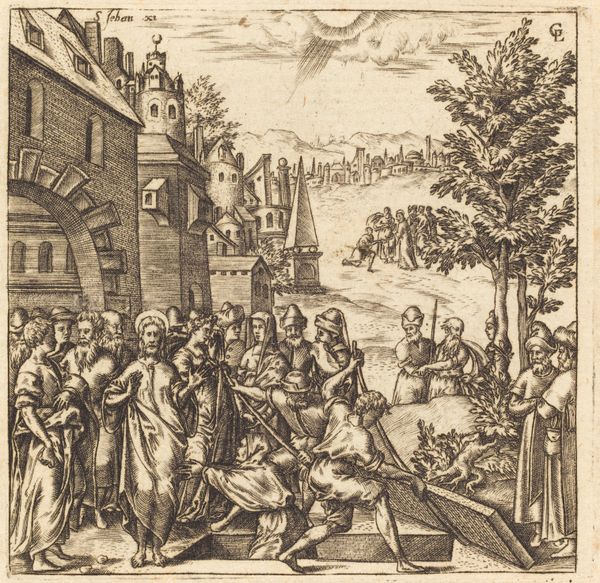
drawing, print, engraving
#
drawing
#
baroque
# print
#
landscape
#
figuration
#
engraving
Dimensions: Sheet: 4 1/8 × 5 7/8 in. (10.4 × 15 cm)
Copyright: Public Domain
Curator: Immediately, this engraving feels charged, even chaotic. The dense hatching creates this incredible feeling of unrest, with the crowd surging towards the center of the composition. Editor: You’ve keyed in on a great entry point. This is Wenceslaus Hollar’s “Winter (Hymens),” created in 1629. Hollar was a master printmaker, and this particular work is currently held here at the Metropolitan Museum of Art. What strikes me about it, beyond that sense of energetic tension you noticed, is how it reveals communal behaviors and societal resilience. Curator: The engraving clearly illustrates some ritualistic scene. Those figures in the middle are fighting with poles; is that how communities warded off winter back then? There's something so raw about it—a physical engagement with nature's harshness, visualized in collective aggression. The symbol is obvious, really; people facing the elements by any means necessary, together. Editor: Well, aggression might be too strong a word; let’s say spirited resistance. I'm not convinced it's a direct 'warding off' as much as a controlled chaos that reasserts human bonds in the face of nature’s indifference. You see them huddling close in these shared activities, reinforcing their social fabric. Also, let's remember Hollar was working within a visual tradition. These kinds of seasonal scenes were often allegorical, reflections of larger social rhythms. The etching below offers context— something like “when harsh winter arrives, let villagers yield with boisterous warmth.” It is about the celebration and continuation of culture. Curator: That reading aligns nicely with my initial read of it, the composition of collective energy toward something vital. Look at the smaller details: the preparation of food, communal meals represented in the foreground and background. These are all about endurance, continuity. Food preparation during that period had more spiritual undertones. Each task had its prayer or wish assigned to it, from churning butter to harvesting the final grain. The act was always deeply integrated. This shows the rituals and processes as equally integral. Editor: And Hollar captures all this societal reinforcement so precisely! He documents more than simply an environment; it shows society in negotiation. As you touched on with your earlier instinct, the social dynamics speak volumes about power structures, community bonds, and how the cycle of seasons shapes collective identity. Curator: That connection helps to humanize both Hollar's skill as a historian, documenting real communal dynamics. It also reminds me of my own need for community during darker seasonal and emotional climates! Editor: Precisely. Art's value often lives in that persistent link between past practices and contemporary experience. "Winter (Hymens)," reminds us of our innate need for togetherness—that echoes loudly, even today.
Comments
No comments
Be the first to comment and join the conversation on the ultimate creative platform.
